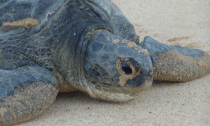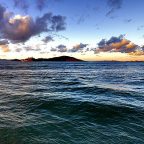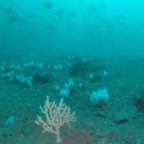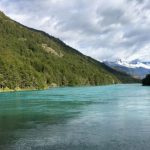
In a remote spot in the South Atlantic, roughly 1,600 kilometers (1,000 miles) from the coast of West Africa, lies Ascension Island, one of the U.K.’s Overseas Territories. In January 2016, the British government announced plans made by Ascension’s elected governing body to protect the island’s biodiverse waters with a marine reserve spanning 230,000 square kilometers (90,000 square miles), an area almost as big as the U.K. itself. Fishing is prohibited in half this area and closely regulated in the other half.
On March 14, however, the U.K. Treasury announced in its annual Spring Statement that not only would the Ascension Island Marine Protected Area (MPA) almost double in size to a massive 443,000 square kilometers (170,000 square miles), but that all of it would become a fully protected “no-take” zone. Commercial fishing will be prohibited, although the local community will still be able to fish for recreation and subsistence.
Currently, governments are working toward a pledge to protect 10 percent of the world’s oceans by 2020. In September 2018, the British government joined calls to increase the goal and protect of 30 percent of the world’s oceans by 2030. “I’m delighted to hear that the U.K. has heeded our call to fully protect the waters around Ascension Island, a jewel in the Atlantic Ocean,”said the U.N.’s Patron of the Oceans, endurance swimmer Lewis Pugh, in a government press release announcing the new MPA. “Protecting 30% of the world’s oceans need not be a dream.”
Life around Ascension Island
Europeans first encountered Ascension Island in 1501. Its unique flora and fauna have drawn the attention of hunters and researchers alike, in particular its large population of green turtles (Chelonia mydas). In the 16thcentury and beyond, passing mariners targeted large female turtles that used Ascension’s beaches as a nesting ground, causing the population to plummet.
In recent years, Ascension’s green turtles have rebounded. Conservationists working on Ascension estimate that the population has increased by about 700 percent since the 1970s, when monitoring started, as a result of protections. Today, the Island is home to the Atlantic Ocean’s second-largest green turtle nesting colony, according to a video featuring Sam Weber, a researcher at the University of Exeter who has worked on Ascension Island.
The island’s waters are also home to some of the world’s biggest blue marlin (Makaira nigricans) and bigeye tuna (Thunnus obesus), both classified as vulnerable on the IUCN Red List. The island is also an important stopping-off point for seabirds, supporting 11 species and more than 400,000 individuals.
While the island’s megafauna are well known, understanding of the overall biodiversity of the waters around Ascension remained relatively elusive until recent years. In 2017, researchers pointed out in an opinion paper that although the island has a relatively low diversity of species, the marine life there is abundant and has an unusually high number of endemic species. Out of 173 fish species, 27 were restricted to Ascension and St. Helena, another South Atlantic island, and 11 of those were endemic to Ascension alone.
A new MPA
A recent Ascension Island government report listed commercial fishing as the greatest threat facing Ascension’s biodiversity, particularly the Atlantic bigeye tuna fishery, which is considered unsustainable. The report reiterated concerns that illegal fishing vessels encroach on the island’s exclusive economic zone, and stated that at least one vessel has been suspected of shark finning there. Using satellite imagery, scientists from Britain and Ascension Island concluded in a recent paper that there has been a high-level of compliance with current fisheries regulations, and expressed hope that the adoption of the no-take MPA would continue the trend.
David Barnes, a marine ecologist with the British Antarctic Survey who contributed to research underpinning the designation of the MPA,said he believed that the new MPA would be a move in the right direction. However, he said more needed to be done on a global scale to preserve Ascension’s unique wildlife, which he called “a natural wonder,” such as tackling the ever-increasing threat of plastic debris.
“The protected area will safeguard against some of the risks to [Ascension’s] biodiversity, [but] addressing global aspects such as climate warming, acidification, and plastic debris needs to be done on a wider scale,” Barnes said.
He described the island as a “rich laboratory” for scientists seeking to understand how species colonize new islands and habitats, and “a barometer for global influences away from more direct, local human impacts.”
“In Ascension, the U.K. has its own miniature Galápagos Islands,” Barnes said. “Its few humans are overshadowed by thousands of land crabs, green turtles, seabirds and surrounding marine life.”
According to Dominic Jermey, director-general of the Zoological Society of London, the creation of the no-take MPA shows that governments are beginning to understand the importance of wildlife conservation.
“Tackling biodiversity loss now will outweigh the costs in the long run, as losing key species at the current rate will result in future challenges that not only affect the economy but also our health,” he said.














Social Profiles